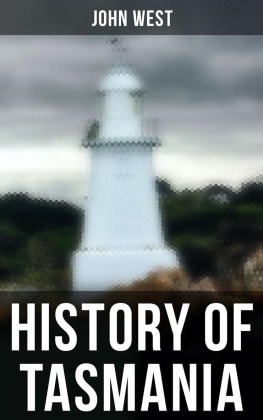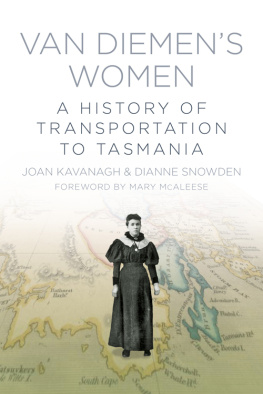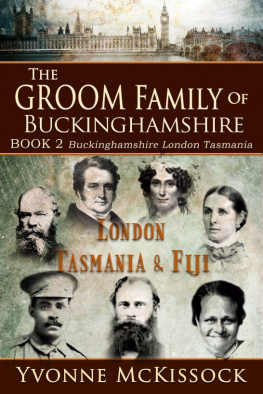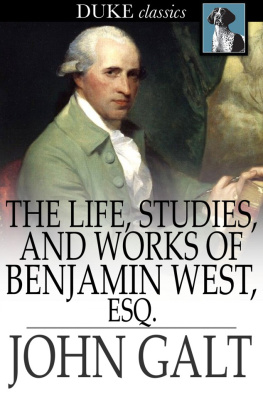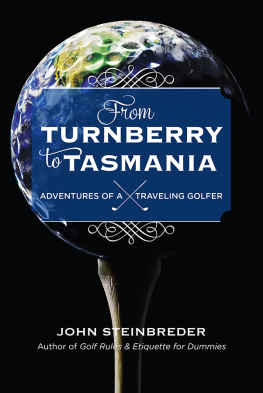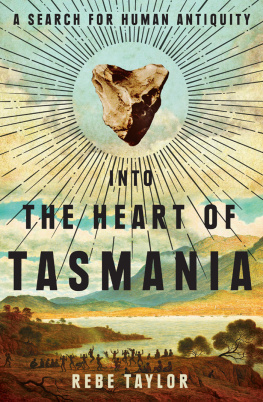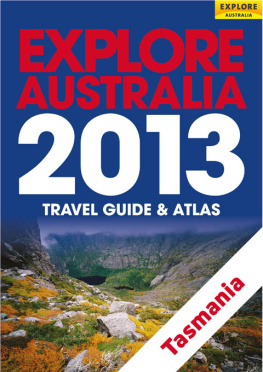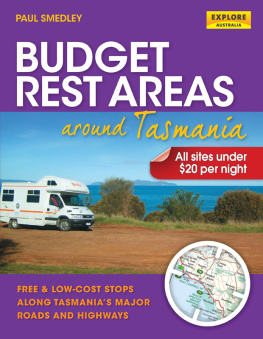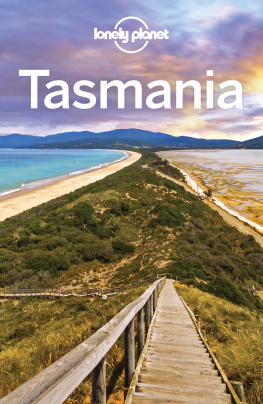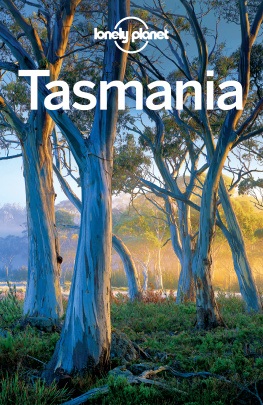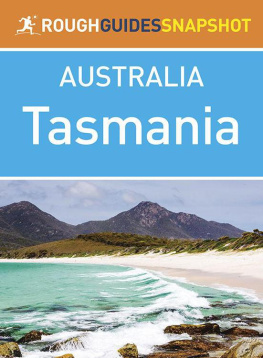DISCOVERY
Table of Contents
SECTION I
Table of Contents
Nearly fifty years have elapsed, since Van Diemen's Land was numbered with the colonies of the British empire. A generation has risen up and is passing away. Thousands, while they venerate the land of their European ancestors, with an amiable fondness love Tasmania as their native country. They will, hereafter, guide its affairs, extend its commerce, and defend its soil; and, not inferior in virtue and intelligence, they will fill an important position in the vast system of Australasia.
To gratify their curiosity, and offer to their view the instructive and inspiriting events of the past, is the purpose of this history.
The difficulty of the task can be appreciated only by experience. To collect from scattered records, facts worthy of remembrance; to separate reality from romance; to remove partial coloring from statements made long ago; and to exhibit useful truth without disguise and without offence, required much research and deliberation.
It is not the intention of this history to relate every event which, when passing, may have been deemed momentous; much less to recal from obscurity the errors, absurdity, and wickedness which exercised no distinct influence on the common welfare. The author has endeavoured to realize the feelings and sympathies of the benevolent and just of another age, and to confine his pen to details which may maintain their interest, when the passions with which they were associated shall subside for ever.
In calling this work The History of Tasmania , a designation is chosen generally preferred by the colonists, and which their successors will certainly adopt. "Van Diemen" is a name affixed to the north coast of New Holland; and this country is the first known discovery of Tasman.
The name of Tasman is recognised by the royal patent constituting the diocese; by several literary societies and periodical works: it forms the term by which we distinguish our Tasmanian from our European youth.
Tasmania is preferred, because "Van Diemen's Land" is associated among all nations with the idea of bondage and guilt; and, finally, because while Tasmania is a melodious and simple sound, "Van Diemen" is harsh, complex, and infernal.
During the reign of Charles I. (Frederick Henry, grandfather of William III. being Stadtholder of Holland) the Dutch discovered this island. The enterprise of that people had raised them to the zenith of their power: unless by England, they were unrivalled in nautical science and commercial opulence. More for the purposes of trade than the acquisition of knowledge, they were anxious to discover unknown countries, and to conceal the information they possessed from the rest of the world.
At this time, Anthony Van Diemen was governor-general of Batavia: by him, Abel Jans Tasman was commissioned to explore the "Great South Land," the name by which New Holland was known until 1665, when, by the authority of the Netherland government, it received its present designation. A fragment of the journal of Tasman, containing an account of his discovery, was first published by Dirk Rembrant, and afterwards translated into most European tongues. In this abstract nautical details respecting Van Diemen's Land were omitted, but were described in the journal itself, and by thirty-eight charts, views, and figures. These were purchased by Sir Joseph Banks, on his return from his voyage to these seas. Tasman's journal was translated by a Netherland clergyman: he considered the age of the manuscript confirmed by the spelling: that it was genuine he had no doubt, although he questioned whether written by Tasman, or transcribed at his command. Sir Joseph Banks acquired at the same time a copy of instructions to Tasman, given by the Governor of Batavia in 1644, for a second expedition, and which recapitulated the various voyages of his predecessors. These, however, have no connection with Van Diemen's Land.
To adorn the new stadthouse of Amsterdam, erected in 1665, three hemispheres were wrought in stone, of twenty-two feet in diameter: the circles were inlaid with brass, and were executed by a celebrated artist. The southern hemisphere exhibited the discoveries of Tasman and his predecessors: they formed the pavement of the hall, until obliterated by the tread of several generations. They were quite forgotten when Sir Joseph Banks sought information from the inhabitants. A copy of these works of art was preserved, and displayed the extent to which New Holland and Van Diemen's Land were known.
The journal of Tasman has been greatly admired: it is clear, laconic, and devout. It opens with an invocation: "May God Almighty be pleased to give his blessing to this voyage. Amen." The document is, indeed, full of pious sentiments: when a long desired breeze liberated the vessel from port, or refreshment was obtained, or safe anchorage found, he dots down a thanksgiving. He reckoned his longitude from the Peak of Teneriffe: the hours he called glasses; his miles were German, fifteen to a degree.
On the 14th of August, 1642, Tasman embarked at Batavia, on board the Heemskirk, the fly-boat Zeehaan, Jerit Zanzoon, master, in company. They set sail for the Mauritius, and arrived on the 5th of September. That island, then commanded by Van Steelan, was but little cultivated, and gave slight promise of its present importance. On the 4th October, they were ready to depart, but were delayed by contrary winds until the 8th, when on a change in their favor they stood eastward to sea. On the 27th, a council being called, it was resolved that a man should constantly look out at the topmast head; and to encourage vigilance it was determined, that the first discoverer of land should receive three reals and a pot of arrack. On the 4th November they saw patches of duckweed and a seal, and inferred their vicinity to land. The first pilot, Francis Jacobzs, on the 7th, supported by the advice of the steersman, thus delivered his opinion:"We should keep to the 44 south latitude, until we have passed 150 longitude; then make for latitude 40 south, and keeping in that parallel to run eastward to 220 longitude, and then steering northward search with the trade wind from east to west for the Solomon Islands. We imagine, if we meet with no main land till we come to 150 longitude, we must then meet with islands." On the 17th, they were in latitude 44 15' and longitude 147 3': they concluded that they had already passed the south land then known. On the 22nd they found their compass was not still within eight points, which they attributed to the influence of loadstone, and which kept the needle in continual motion. On the 24th, at noon, they found their latitude 42 25' south, longitude 163 31': in the afternoon, at 4 o'clock, they observed land, Point Hibbs, bearing east by north. The land was high, and towards evening they saw lofty mountains to the east south-east, and to the north-east two smaller mountains: here their compass stood right. They resolved to run off five hours to sea, and then to run back towards the land. On the 25th, the morning was calm, and at 5 o'clock they were within three miles of the shore, and had soundings at sixty fathoms. They approached a level coast, and reckoned their latitude 42 30', and middle longitude 163 50'. On this day they named their discovery: "we called it Anthony Van Diemen's Land, in honor of our high magistrate and governor-general, and the islands near (Boreels) we named in honor of the council of India, as you may see by the little map we made." Next day they lost sight of land. They fixed the longitude 163 50', and gave orders to the master of the


